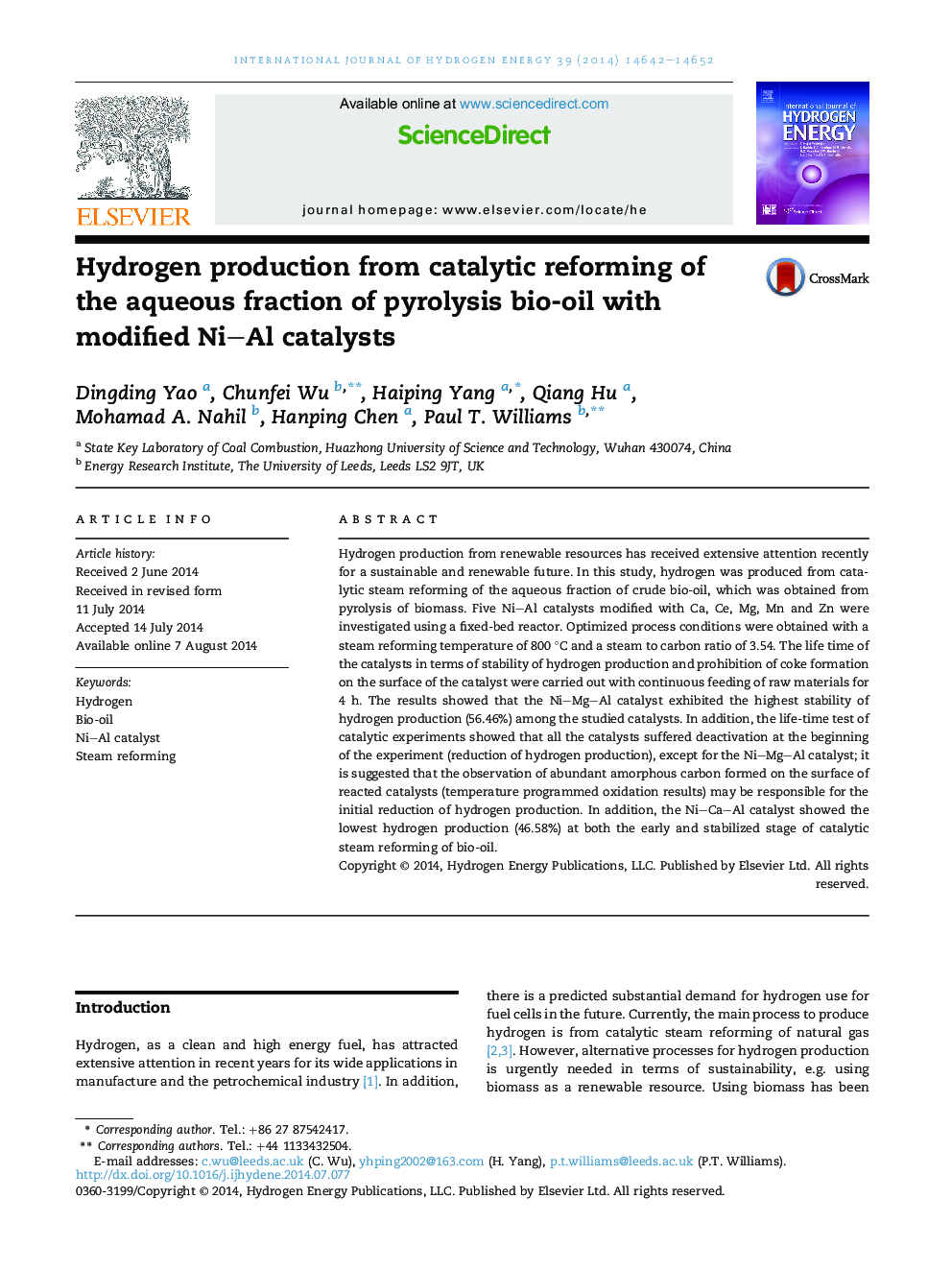| Article ID | Journal | Published Year | Pages | File Type |
|---|---|---|---|---|
| 7718028 | International Journal of Hydrogen Energy | 2014 | 11 Pages |
Abstract
Hydrogen production from renewable resources has received extensive attention recently for a sustainable and renewable future. In this study, hydrogen was produced from catalytic steam reforming of the aqueous fraction of crude bio-oil, which was obtained from pyrolysis of biomass. Five Ni-Al catalysts modified with Ca, Ce, Mg, Mn and Zn were investigated using a fixed-bed reactor. Optimized process conditions were obtained with a steam reforming temperature of 800 °C and a steam to carbon ratio of 3.54. The life time of the catalysts in terms of stability of hydrogen production and prohibition of coke formation on the surface of the catalyst were carried out with continuous feeding of raw materials for 4 h. The results showed that the Ni-Mg-Al catalyst exhibited the highest stability of hydrogen production (56.46%) among the studied catalysts. In addition, the life-time test of catalytic experiments showed that all the catalysts suffered deactivation at the beginning of the experiment (reduction of hydrogen production), except for the Ni-Mg-Al catalyst; it is suggested that the observation of abundant amorphous carbon formed on the surface of reacted catalysts (temperature programmed oxidation results) may be responsible for the initial reduction of hydrogen production. In addition, the Ni-Ca-Al catalyst showed the lowest hydrogen production (46.58%) at both the early and stabilized stage of catalytic steam reforming of bio-oil.
Keywords
Related Topics
Physical Sciences and Engineering
Chemistry
Electrochemistry
Authors
Dingding Yao, Chunfei Wu, Haiping Yang, Qiang Hu, Mohamad A. Nahil, Hanping Chen, Paul T. Williams,
